The Ultimate Guide to SaaS B2B Lead Generation
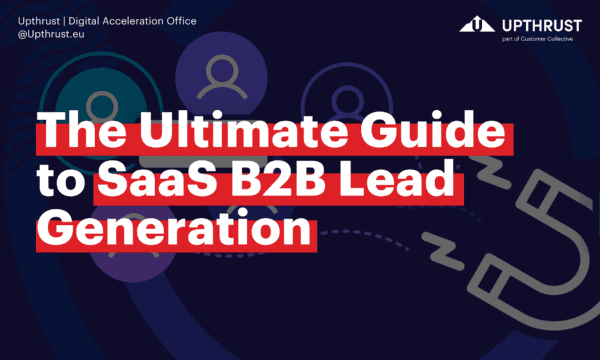
In the competitive world of SaaS, lead generation is the lifeblood of growth. Whether you’re a startup or an established company, generating high-quality leads is crucial for success. This guide will provide you with actionable strategies for B2B SaaS lead generation, helping you attract, engage, and convert your target audience.
Understanding SaaS Lead Generation
What is SaaS Lead Generation?
Lead generation for SaaS companies is about more than just collecting contact information. It’s about attracting the right people who have a genuine interest in your product or the problem you are trying to solve, and nurturing them until they become paying customers. This process involves understanding your potential customer and needs, building relationships, and leveraging technology and data to reach your target audience.
Some first examples and step-by-step guides for B2B SaaS Lead Generation
Example 1: Free Webinar
A SaaS company offering project management software could generate more leads just by offering a free webinar on “How to Improve Project Management in Your Organization.” This not only attracts potential leads interested in improving their project management skills but also introduces them to the company’s software.
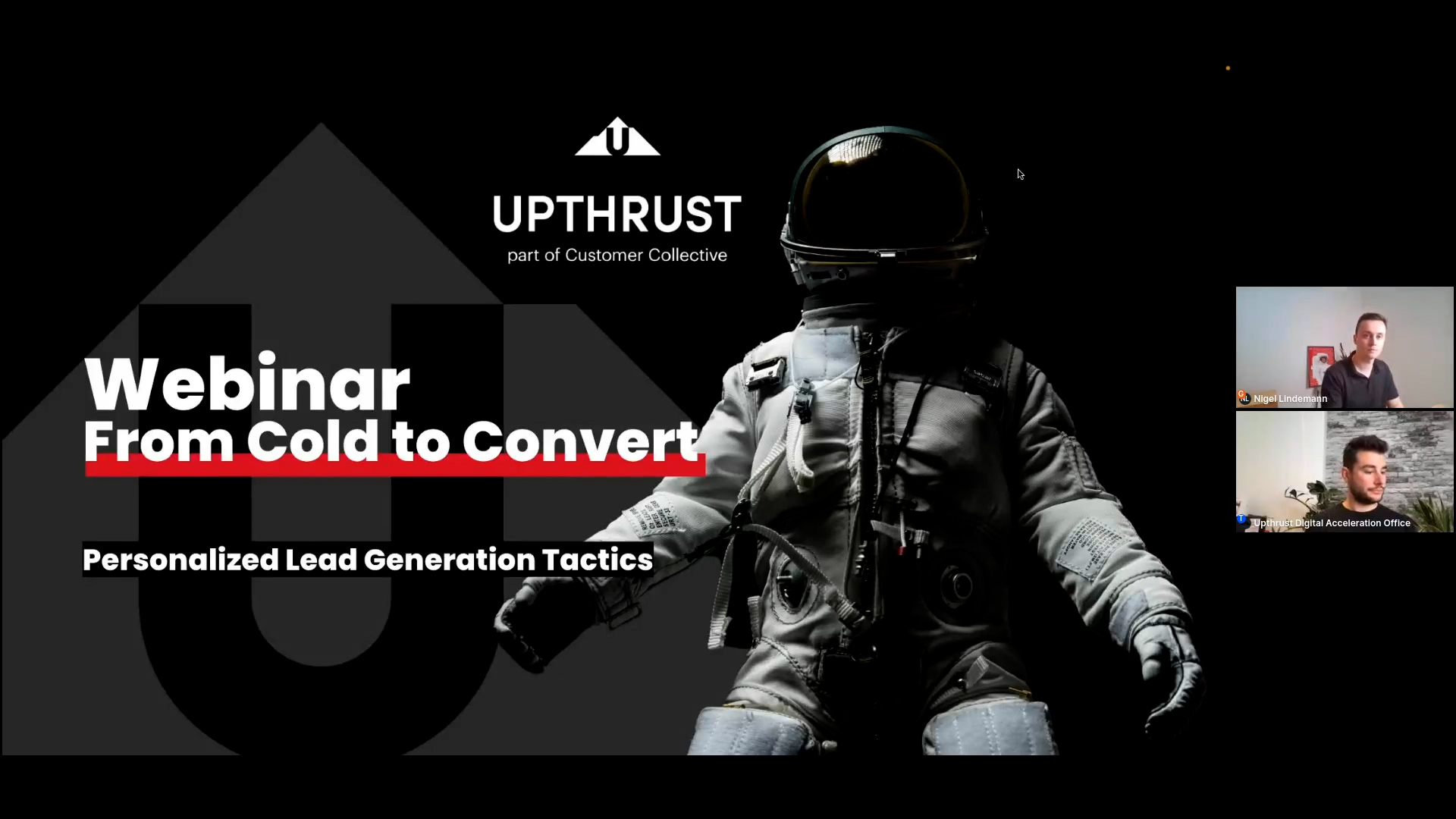
Step-by-Step Guide:
- Identify a topic that is relevant to your target audience and your product.
- Plan the content of the webinar, ensuring it provides value to the audience.
- Set up a registration page for the webinar where attendees can sign up and provide their contact information. There is a fine line between asking for too much information and not enough. From our experience, asking for a phone number improves your lead quality tremendously.
- Promote the webinar on your website, social media, and email newsletter.
- Host the webinar, provide valuable information, and keep the last 10 minutes to introduce your product. End with a strong call to action.
- Follow up with attendees after the webinar, providing additional information and a call to action to try your product.
Example 2: Free Trial
Offering a free trial of your software is another effective way to generate qualified leads. This allows potential customers to try your product before committing to a purchase, increasing the likelihood of conversion.
Step-by-Step Guide:
- Set up a free trial option for your software, ensuring it’s easy for users to sign up.
- Promote the free trial on your website, social media, and email newsletter.
- Provide support and resources to free trial users to help them get the most out of your product. Make sure you have a clear understanding of when a user reaches a “wow” moment. This moment we call a user onboarded or activated. If you can’t show him the value of your product in the first interaction with your product, it’s not very likely he will come back.
- Follow up with free trial users towards the end of the trial period, encouraging them to convert to a paid plan.
The Importance of SEO in your SaaS Lead Generation Strategy
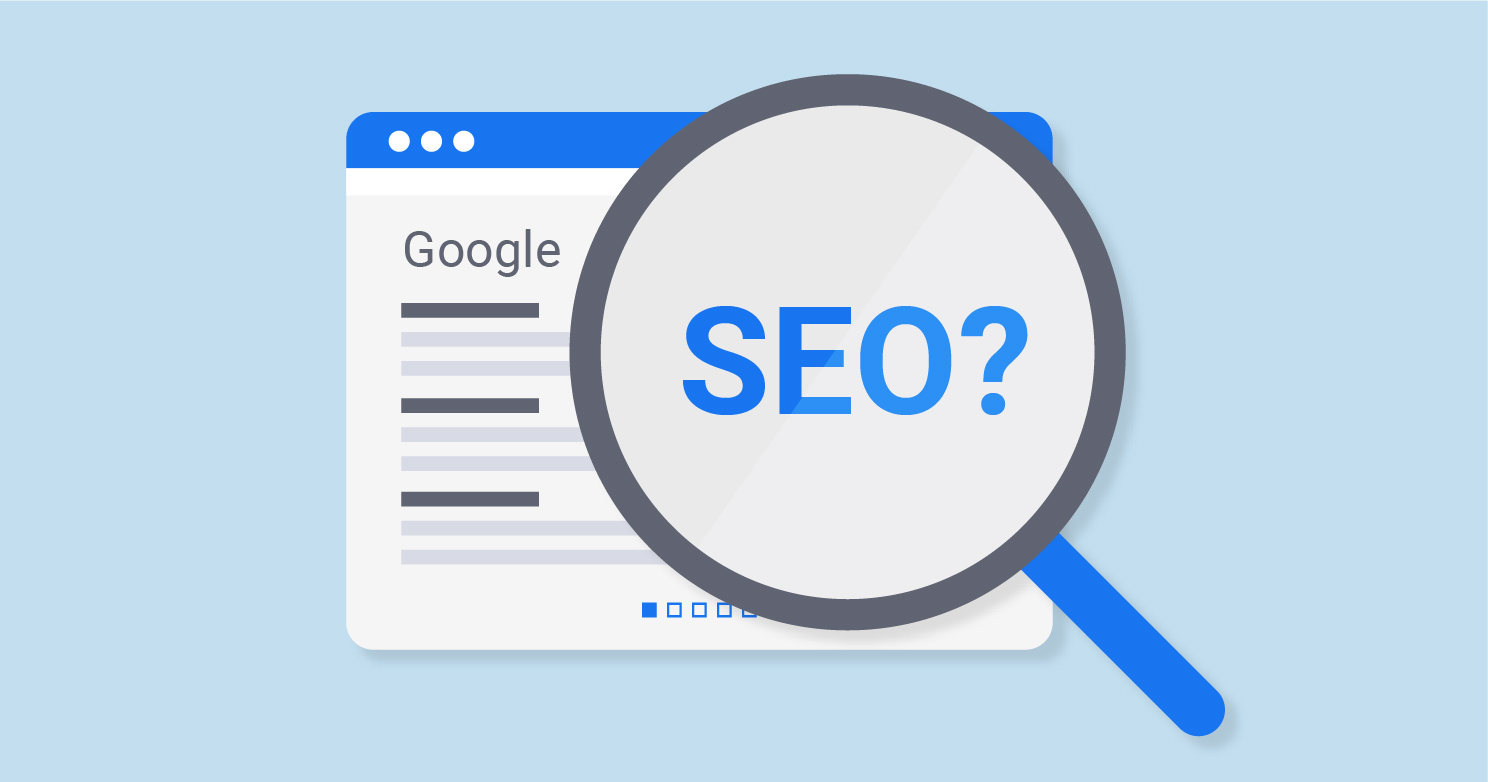
Role of SEO in SaaS Lead Generation
Search Engine Optimization (SEO) plays a crucial role in lead generation for SaaS companies. By optimizing your website and content for search engines, you can attract more organic traffic and increase your visibility online. This includes optimizing for keywords such as “B2B SaaS lead generation,” “SaaS lead generation company,” and “lead and saas lead generation marketing strategies for B2B SaaS.”
SEO Examples and Step-by-Step Guide for SaaS Lead Generation
Example 1: Blog Post Optimization
A blog post titled “5 Strategies for Effective B2B SaaS Lead Generation” could be optimized for search engine results pages with the keyword “B2B SaaS: lead generation tactics.” By including the keyword in the title, headers, and throughout the content, the blog post can rank higher in search engine results and can help you in generating leads.
Step-by-Step Guide:
Identify a keyword that is relevant to your content, and has a high search volume and low competition. Our favorites are Semrush and Neil Patel’s Ubersuggest (free).
Include the keyword in the title, headers, and throughout the content.
Use the keyword in the meta description and URL of the blog post.
Include relevant internal and external links in the blog post.
Promote the blog post on your social media channels and email newsletter.
Example 2: Website Optimization
Optimizing your website for search engines can increase your visibility and attract more organic traffic. This includes optimizing your website’s design, loading speed, and mobile-friendliness.
Step-by-Step Guide:
Ensure your website has a clean, user-friendly design.
Optimize your website’s loading speed by compressing images, using a content delivery network (CDN), and minimizing the use of JavaScript. To check your (mobile) website loading speed, use the Google Pagespeed test. Pay extra attention to the mobile speed since Google indexes mobile first.
Make sure your website is mobile-friendly, as this is a ranking factor for search engines.
Use relevant keywords in your website’s content, meta descriptions, and URLs.
Include a sitemap to help search engines crawl and index your website.
Content Marketing for SaaS Lead Generation
Using Content Marketing for Lead Generation
Content marketing is a powerful tool for SaaS lead generation. It’s actually one of my favorite lead-generation strategies. By creating valuable and engaging content, you can attract potential leads and nurture them through the sales funnel. This includes blog posts, ebooks, webinars, and more. In our case, this would mean that we would have to include keywords like “lead, powerful lead generation strategies for SaaS” and “SaaS B2B, best lead generation strategies” in our content to improve our SEO.
Content Marketing Examples and Step-by-Step Guide for SaaS Lead Generation
Example 1: Ebooks
A SaaS company that sells SaaS B2B lead generation software, could create an ebook titled “The Ultimate Guide to SaaS B2B Lead Generation.” This ebook could provide in-depth information on various lead generation strategies, including SEO, content marketing strategy, social media marketing, and email marketing. By offering this ebook in exchange for contact information, the company can generate leads and build its email list.
Step-by-Step Guide:
Identify a topic that is relevant to your target audience and your product.
Write an ebook that provides in-depth information on the topic.
Set up a landing page for the ebook where visitors can provide their contact information in exchange for the ebook.
Promote the ebook on your website, social media, and email newsletter.
Follow up with those who downloaded the ebook, providing additional resources and a call to action to try your product. Don’t limit your follow-up to email only, add additional channels like LinkedIn, phone, retargeting,…
Example 2: Blog Posts
Regularly publishing quality blog posts, on topics relevant to your target audience can attract potential leads and improve your SEO. The blog posts can provide valuable information, establish your company as a thought leader, and introduce readers to your product.
Step-by-Step Guide:
Identify topics that are relevant to your target audience and your product.
Write blog posts that provide valuable information on these topics.
Include a call to action in each blog post, encouraging readers to try your product or sign up for your email newsletter.
Promote the blog posts on your social media channels and email newsletter.
Engage with readers in the comments section of each blog post, answering questions and providing additional information.
Want to know more about Content Marketing for Saas?
Paid Advertising on Social Media: don’t try to generate leads too quickly
In the world of SaaS, paid advertising on social media platforms is a powerful tool for reaching your target audience and driving conversions. It’s not just about creating an ad and hoping for the best, though. Successful paid social ads require a strategic approach, one that involves multiple layers of advertising and retargeting efforts. This chapter will delve into the intricacies of paid social ad strategy, providing tangible examples and step-by-step guides to help you navigate this complex landscape.
Understanding the Layers of Paid Social Advertising
Paid social advertising isn’t a one-size-fits-all approach. It involves multiple layers, each designed to target customers at a specific stage of the customer journey. These layers are often referred to as part of the marketing funnel, which includes the awareness, consideration, and conversion stages.
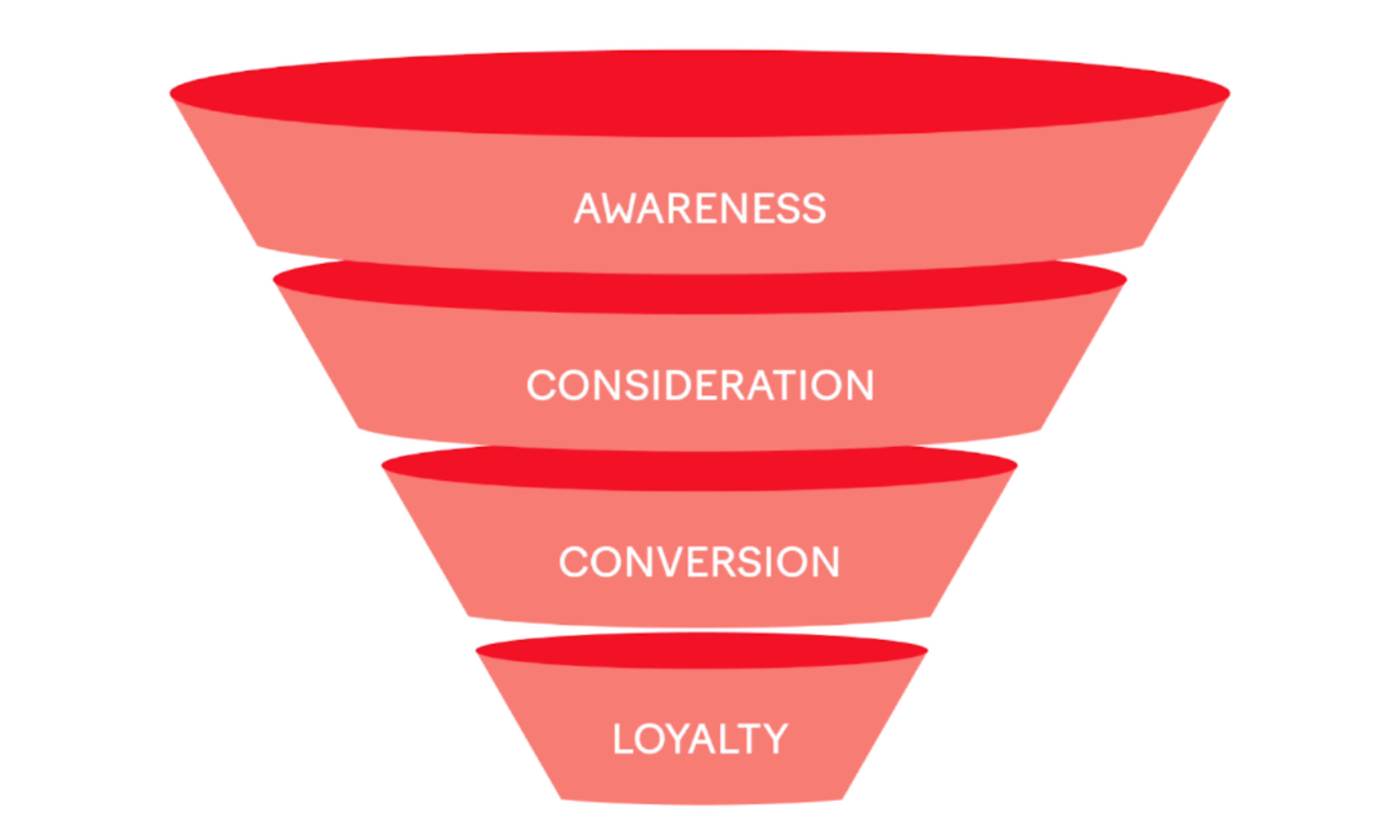
Awareness Stage
The awareness stage is at the top of the funnel (TOFU). Here, your goal is to make potential customers aware of your brand and the problems your product or service can solve. This is typically achieved through broad, informative, and relevant content that resonates with your target audience.
Example: LinkedIn Sponsored Content
Let’s say you’re on the marketing team for a SaaS company offering a project management tool. You could create a LinkedIn Sponsored Content ad that highlights the common challenges of project management and introduces your tool as a solution.
Step-by-Step Guide:
Create a piece of quality content, that provides value to your target audience, such as a blog post, ebook, or webinar.
Go to LinkedIn Campaign Manager and create a new Sponsored Content campaign.
Choose your target market or audience based on factors like industry, job role, location, and more.
Set your budget and schedule.
Monitor the performance of your campaign and make necessary adjustments. In this phase, I’m a big fan of video ads and then monitor the number of video views. (50% and above) This allows us to retarget the video viewers in a later stage of the funnel.
How we leveraged LinkedIn’s powerful advertising capabilities to skyrocket MobieTrain’s lead generation efforts
Consideration Stage
Once potential customers are aware of your brand, they move into the consideration stage. Here, they’re evaluating different solutions to their problem. Your goal at this stage is to position your product or service as the best solution. This is often achieved through more detailed content that highlights the unique benefits and features of your product or service.
Example: Facebook Lead Ads
At this stage, you could create a Facebook Lead Ad that provides a case study about your project management tool, highlighting its unique benefits and features. At this point, we are generating marketing qualified leads. These leads might have an interest but are not 100% sales-ready yet.
Step-by-Step Guide:
Create a detailed piece of content that highlights the unique benefits and features of your product or service. Bonus points if the use case is written about a company in the same industry as the industry you are targeting.
Go to Facebook Ads Manager and create a new Lead Ad campaign.
Choose your target audience. You can opt for a standard audience based on factors like interests, behaviors, and more. In this phase, it could be more interesting to retarget people who engaged with your content or ads that you ran in the awareness phase.
Set your budget and schedule.
Monitor the performance of your campaign and make necessary adjustments. In this phase, I would have a look at your CPC (cost per click) and your CPL (cost per lead).
Conversion Stage
The final layer of the funnel is the conversion stage. Here, your potential customers are ready to make a purchase. Your goal at this stage is to convince them to choose your product or service. This is often achieved through persuasive content that provides a compelling call to action.
Example: Google Search Ads
At this stage, you could create a Google Search Ad that offers a limited-time discount on your project management tool, encouraging potential customers to make a purchase before the offer ends.
Step-by-Step Guide:
Create a compelling offer for your product or service, such as a limited-time discount.
Go to Google Ads and create a new Search Ad campaign.
Choose your target keywords, such as “project management tool discount.”
Set your budget and schedule.
Monitor the performance of your campaign and make necessary adjustments.
The Power of Retargeting
Retargeting is a powerful tool in paid social advertising. It involves targeting ads at people who have already interacted with your brand in some way, such as visiting your website or clicking on a previous ad. This allows you to reach people who have already shown an interest in your brand, making them more likely to convert.
Example: Facebook Retargeting Ads
You could use Facebook retargeting ads to reach people who have visited your website or clicked on one of your previous ads.
Step-by-Step Guide:
Install the Facebook pixel on your website. This is a piece of code that allows Facebook to track visitors to your website.
Create a custom audience in Facebook Ads Manager. This should include people who have visited your website or interacted with your content.
Create a new ad campaign in Facebook Ads Manager and choose your custom audience as the target audience.
Set your budget and schedule.
Monitor the performance of your campaign and make necessary adjustments.
Conclusion
Paid social advertising is a complex but rewarding strategy for SaaS companies. By understanding the layers of the digital marketing funnel and implementing a multi-layered advertising strategy, you can reach your target audience at the right time with the right message, driving conversions and boosting your bottom line. With the right approach and the right tools, you can create a powerful paid social advertising strategy that drives growth for your SaaS business.
Social Media and SaaS Lead Generation
Leveraging Social Media for Lead Generation
Social media platforms are a great way to reach and engage with your target audience. By sharing valuable content and engaging with your followers, you can generate leads and build relationships. Platforms like LinkedIn are particularly effective for B2B SaaS lead generation.
The most important thing is to not spread yourself too thin. You can’t be present on all social media channels. Choose the one or two where your target audience spends the most time, and try to capture attention.
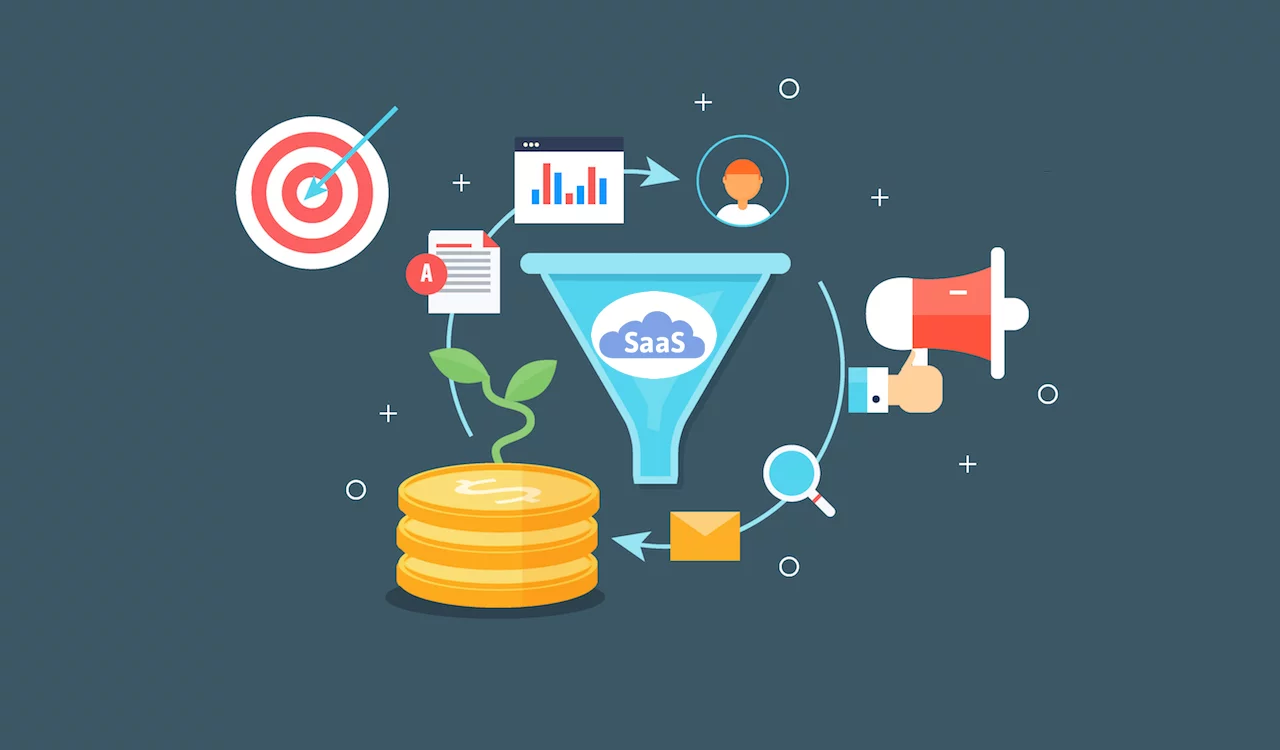
Social Media Examples and Step-by-Step Guide for SaaS Lead Generation
Example 1: LinkedIn
A SaaS company could use LinkedIn to share blog posts, industry news, and company updates. By engaging with its followers and participating in relevant LinkedIn groups, the company can increase its visibility, attract potential leads, and establish itself as a thought leader in the SaaS industry.
Step-by-Step Guide:
Create a LinkedIn company page if you don’t already have one.
Regularly post valuable content, including blog posts, industry news, and company updates.
Engage with your followers by responding to comments and messages.
Join relevant LinkedIn groups and participate in discussions.
Use LinkedIn’s advertising options to reach a larger audience.
Example 2: Twitter
Twitter can also be an effective platform for SaaS lead-generation campaigns. By regularly tweeting valuable content and engaging with your followers, you can increase your visibility and attract potential leads.
Step-by-Step Guide:
Create a Twitter account for your company if you don’t already have one.
Regularly tweet valuable content, including blog posts, industry news, and company updates.
Engage with your followers by responding to tweets and direct messages.
Use relevant hashtags to increase the visibility of your tweets.
Use Twitter’s advertising options to reach a larger audience.
Email Marketing for SaaS Lead Generation
Utilizing Email Marketing for Lead Generation
Email marketing is a highly effective strategy for nurturing leads. By sending personalized and targeted emails, you can keep your leads engaged and guide them through the sales funnel. This includes sending regular newsletters, product updates, and personalized offers.
You can also use email marketing to reach out to a cold audience. This is one of the lead generation strategies that you have to be very careful with. It’s easy to be perceived as a spammer.
If you want to learn more, then definitely read our case study: B2B SaaS Email Marketing Strategy: Increase Lead Generation By 200% With Multiple Touchpoints.
Email Marketing Examples and Step-by-Step Guide for SaaS Lead Generation
Example 1: Welcome Email Series
A SaaS company could send a series of emails to new subscribers, introducing them to the company and its products. The first email could welcome the subscriber and provide an overview of the company. The following emails could introduce the company’s products, share customer testimonials, and offer a free trial or demo.
Step-by-Step Guide:
Set up an email marketing platform if you don’t already have one. Our favorites are Active Campaign and Hubspot
Create a welcome email series that introduces new subscribers to your company and its products.
Set up an automated workflow to send the welcome email series to new subscribers.
Monitor the performance of the welcome email series, including open rates, click-through rates, and conversion rates.
Make necessary adjustments to the welcome email series based on the performance data.
Example 2: Regular Newsletters
Sending regular newsletters to your email list can keep your leads engaged and informed about your company and its products. The newsletters can include company news, blog posts, product updates, and special offers.
Step-by-Step Guide:
Plan the content of your newsletters, ensuring they provide value to your subscribers.
Design your newsletters, ensuring they are visually appealing and easy to read.
Send your newsletters on a regular schedule, such as weekly or monthly.
Monitor the performance of your newsletters, including open rates, click-through rates, and conversion rates.
Make necessary adjustments to your newsletters based on the performance data.
Want to know more about how to create a High Performing Email Marketing for Saas?
Tracking and Analyzing Your Lead Generation Efforts
Importance of Tracking and Analyzing Lead Generation Efforts
To ensure the success of your lead generation efforts, it’s crucial to track and analyze your results. This includes tracking KPIs such as the number of leads generated, the cost per lead, and the conversion rate. By analyzing these metrics, you can identify what’s working and make necessary adjustments to improve your lead generation strategy.
Examples and Step-by-Step Guide for Tracking and Analyzing Lead Generation Efforts
Example 1: Google Analytics
A SaaS company could use Google Analytics to track the number of visitors to its website, the pages they visit, and the actions they take. This data can provide valuable insights into the effectiveness of the company’s lead generation, sales and marketing efforts both, and help identify areas for improvement.
Step-by-Step Guide:
Set up Google Analytics for your website if you haven’t already.
Set up goals in Google Analytics to track the actions you want visitors to take, such as signing up for a free trial or downloading an ebook.
Regularly check your Google Analytics data to monitor the performance of your website and your lead generation efforts.
Use the data to identify areas for improvement and make necessary adjustments.
Example 2: CRM
A Customer Relationship Management (CRM) system can help you track and manage your leads. This includes tracking the source of each lead, the actions they take, and their progress through the sales funnel.
Step-by-Step Guide:
Set up a CRM system if you don’t already have one.
Enter each new lead into the CRM system, including their contact information and the source of the lead.
Regularly update each lead’s record in the CRM system, tracking their actions and their progress through the sales funnel.
Use the CRM system to analyze your lead data and identify trends and areas for improvement.
Conclusion
Lead generation for B2B SaaS companies can be challenging, but with the right strategies and tools, you can attract high-quality leads and grow your business. By understanding your audience, creating valuable content, leveraging social media, and tracking your results, you can create a powerful lead-generation strategy that drives business growth too.
